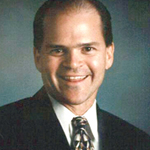A Layman’s View of Vision Therapy
By John Lynch
Charity Tchida choked back the tears as she recounted the dramatic success her son experienced with Vision Therapy at Dr. Rick Graebe’s office in Versailles.
Damon, now 10, had been considered legally blind when he was 4. The family had tried everything to help their son – even Vision therapy in Colorado. Nothing worked. Worse, doctors told the family that only surgery might help their son.
Not until Charity brought her son to Dr. Graebe did the family dare to hope again.
After 15 weeks, “we noticed dramatic improvement, phenomenal changes,” Charity said.
Damon’s acuity reading ability and his attitude improved. His confidence soared.
By the end of the Vision Therapy treatments, Damon’s double amblyopia had been corrected and his vision was 20-25 with his glasses.
This is only one of many Vision Therapy success stories we have shared with our readers since 2008.
Time and again families have reported life-altering benefits for their school-aged children (college too) after undergoing Vision Therapy treatment.
It’s been my good fortune to report and write these stories, a process that has enriched my appreciation for the dedication and determination of parents to advocate for their children.
I’ve also become an unofficial expert on Vision Therapy. My guide in this field has been Dr. Graebe, a behavioral optometrist who has patiently explained to me the theory behind Vision Therapy, which is a kind of physical therapy for the eyes and brain.
VT is a non-surgical treatment for many common visual problems such as lazy eye, crossed eyes, double vision, convergence insufficiency and some reading and learning disabilities.
VT helps improve visual efficiency (how well the eyes and muscles function) and vision processing (how well the brain understands information the eyes transmit).
The treatment consists of a series of sequenced activities that are actually fun for kids.
They play pencil and puzzle games, bounce and handle balls, and perform activities that involve the body.
VT’s methods are supported by the latest research on neuroplasticity – the brain’s ability to change.
Not every community has a Vision Therapy practice. Central Kentucky should consider itself fortunate to have Dr. Graebe’s Vision & Learning Center.

